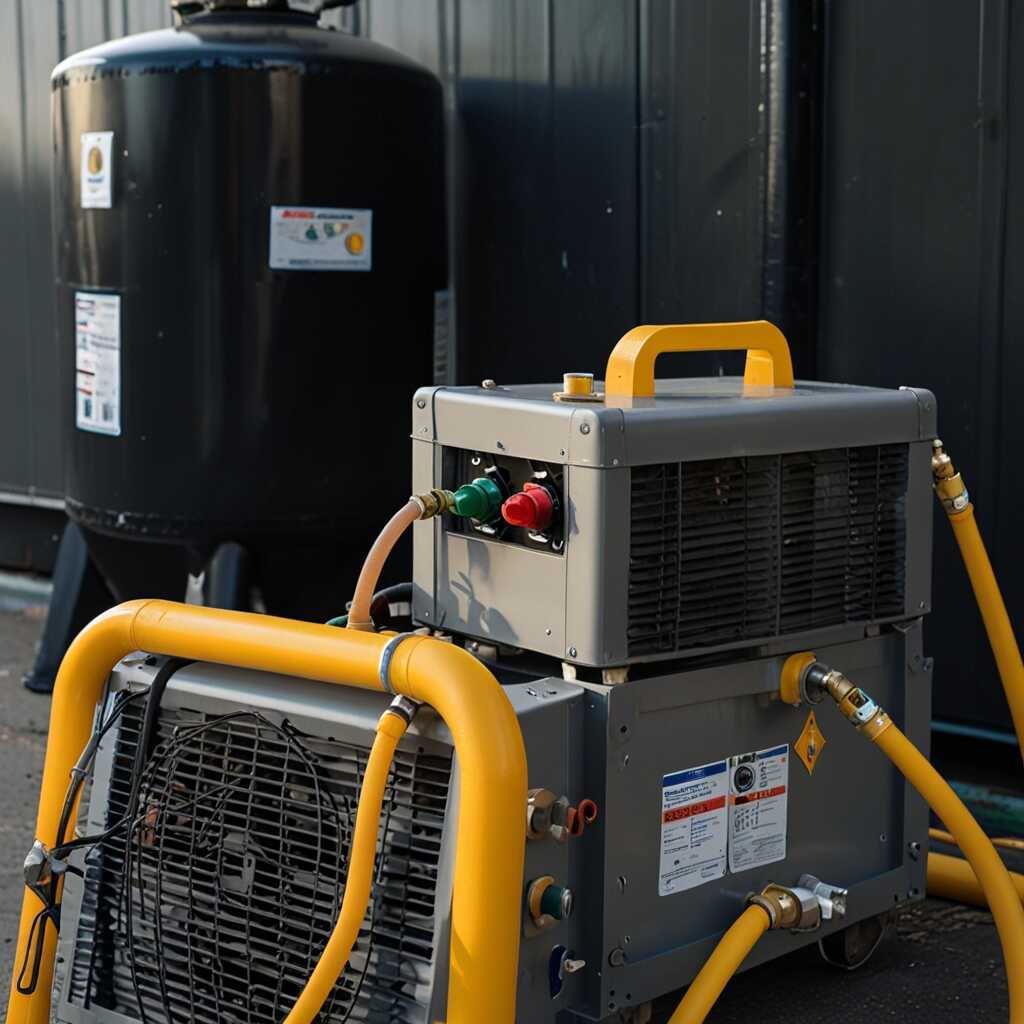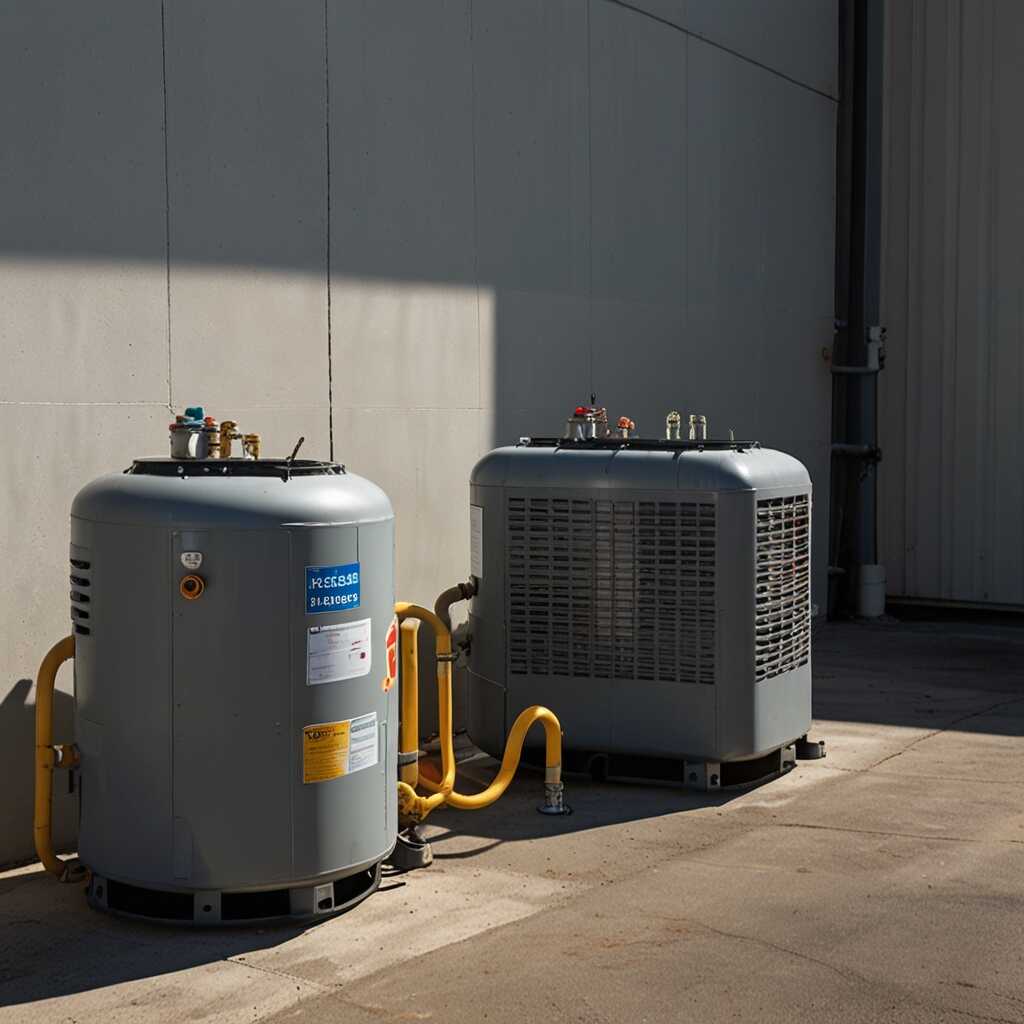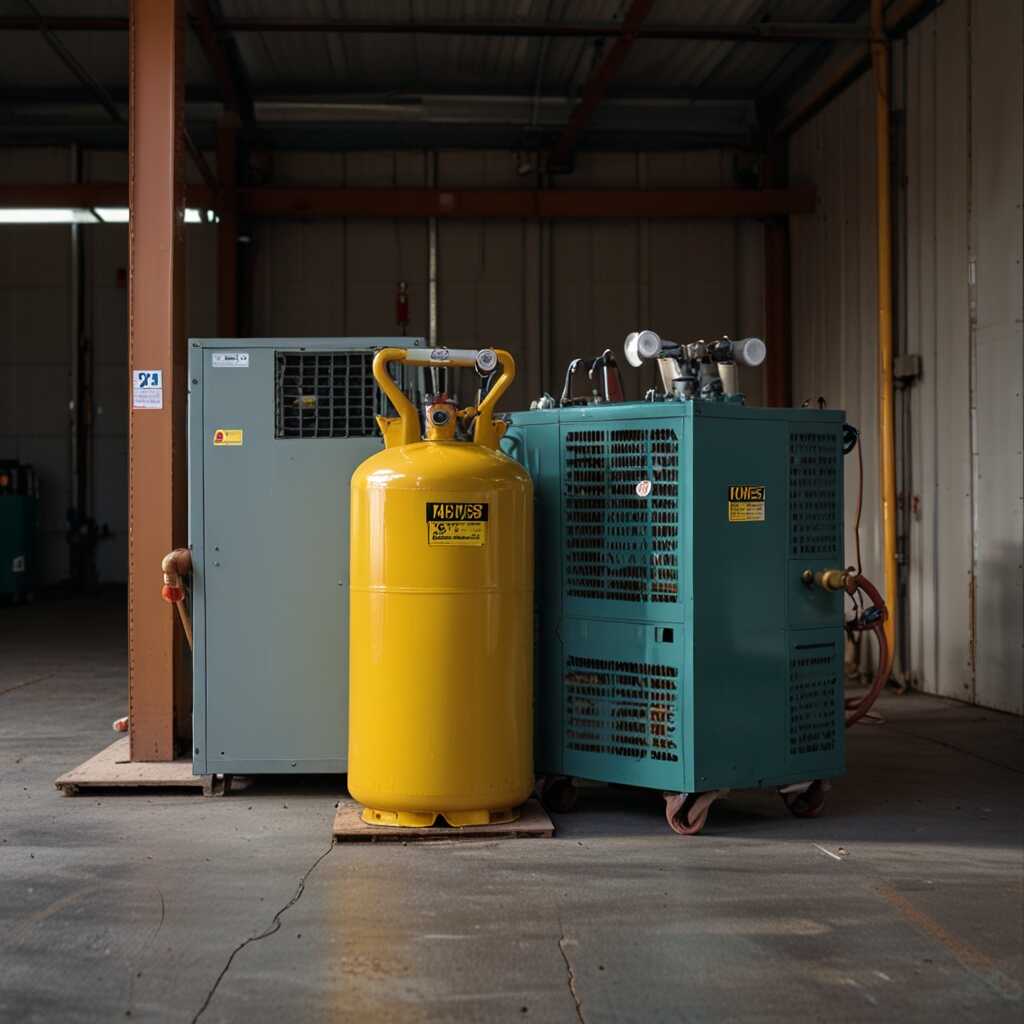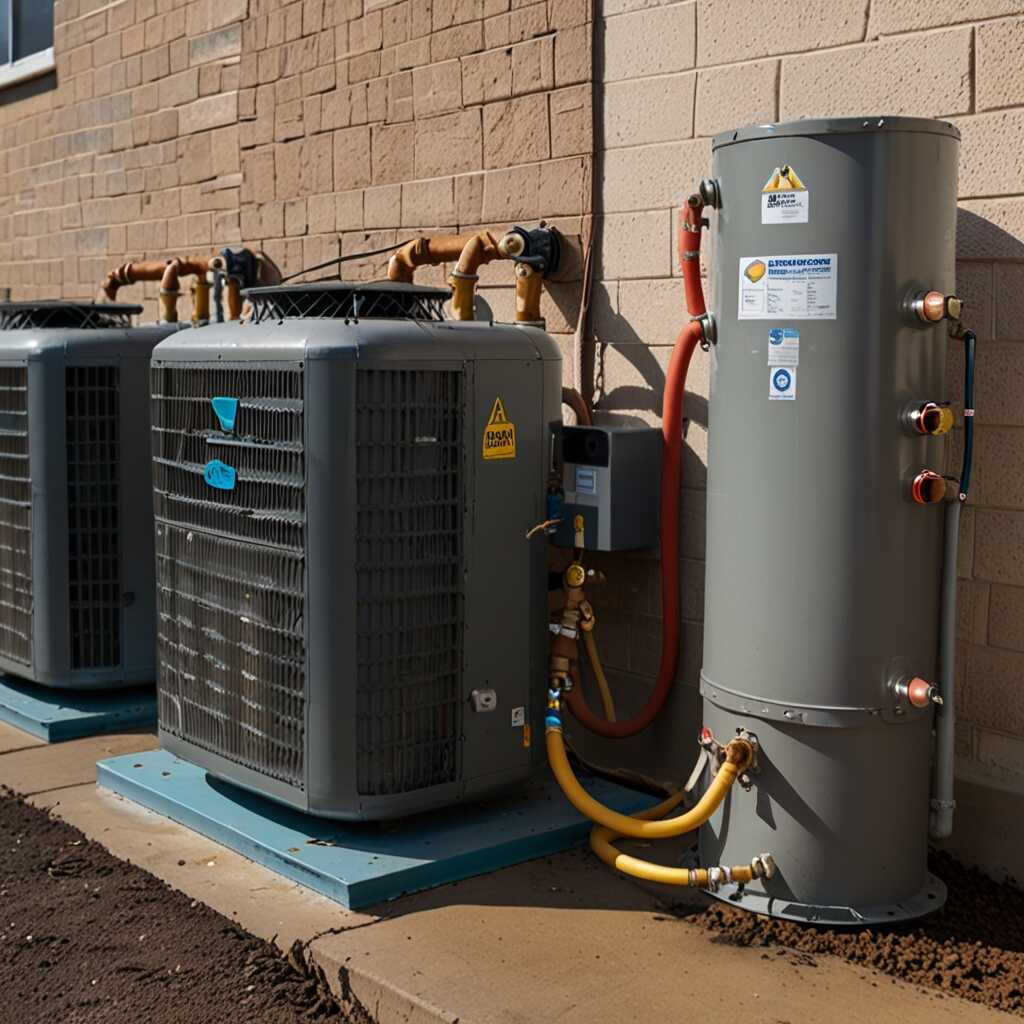Improving energy efficiency with inverter technology in refrigerant recovery machines is a critical advancement for the HVAC industry. This technology allows for precise control of compressor speeds, leading to significant reductions in energy consumption. Refrigerant Recovery Pro highlights how these machines benefit technicians by enhancing performance while minimizing operational costs. Understanding the advantages of inverter technology can help HVAC professionals make informed choices about equipment that aligns with energy-saving goals.
Introduction to Inverter Technology in Refrigerant Recovery
Inverter technology in refrigerant recovery machines includes a variable-speed compressor that adjusts its speed according to the cooling or heating load required. This technology improves energy efficiency by reducing power consumption during low-demand periods, making it significantly better than traditional fixed-speed systems. Inverter systems can enhance the recovery performance, providing quick and efficient refrigerant extraction. The comparison between inverter technology and traditional methods reveals that inverter-equipped machines can achieve energy savings of nearly 30% to 50%, depending on usage patterns and specific models. This means that HVAC professionals can expect reduced energy bills and a lower environmental impact while ensuring reliable operation of their refrigerant recovery machines.
Impact of Inverter Technology on HVAC Systems
Inverter technology profoundly impacts HVAC systems by enabling more precise control and efficient operation. Its adjustable speed lets professionals customize performance based on room conditions, ensuring comfort while minimizing energy wastage. Inverter-based refrigerant recovery machines are designed to handle varying workloads effectively, leading to improved energy efficiency and reliability. Studies have shown that these units can significantly lower energy use and enhance system longevity. This ensures high performance and meets the evolving standards set for energy efficiency in HVAC applications.
The Importance of Energy Efficiency in Refrigeration
Energy efficiency in refrigeration systems is critical because it leads to significant cost savings for users and reduces environmental footprints. Efficient systems consume less energy, which translates to lower utility bills. Energy-efficient refrigeration methods also minimize greenhouse gas emissions by reducing overall energy consumption. For businesses, implementing energy-efficient technologies, like inverter technology, can result in an impressive percentage of energy savings. Studies indicate that inverter technology in refrigerant recovery machines can provide energy savings of up to 30%. This efficiency helps equip HVAC professionals with more sustainable options.
Understanding Inverter Technology Benefits in HVAC Applications
Inverter technology enhances energy efficiency by adjusting the compressor speed to match the cooling load. This means that instead of running at full capacity, the compressor operates at the most efficient level needed for the current demand. As a result, systems equipped with inverter technology offer reliability and extended equipment lifespan. Using inverter-driven compressors, refrigerant recovery machines significantly improve performance, using less energy during lower demand times. This technology ensures HVAC professionals can provide reliable service while minimizing their energy consumption and reducing overall operating costs.

Mechanics of Inverter Technology in Recovery Machines
Inverter technology in refrigerant recovery machines consists of key components such as the inverter drive, compressor, and control systems. These components work together to enable variable speed capabilities. This allows the machines to match their horsepower with real-time demand. By doing this, the energy efficiency of HVAC applications significantly improves. For instance, the adjustable speed can optimize power usage during different refrigerant recovery stages. Data shows that machines with inverter technology can reduce energy consumption by up to 30%. This makes them an excellent choice for HVAC professionals seeking to enhance energy efficiency.
Understanding Variable Speed Capability
Variable speed capability is a crucial feature of inverter technology. It allows refrigerant recovery machines to adjust compressor speeds based on system demands. This dynamic adjustment provides significant energy savings compared to fixed-speed systems. Machines designed with variable speed can handle different refrigerant types more efficiently. They maintain consistent vacuum levels while reducing power use during low demand periods. The flexibility enhances their overall performance, making them reliable for HVAC applications. Comprehensive testing has proven that variable speed units are able to provide consistent results even in varying operational conditions.
Key Metrics of Energy Savings in Modern Cooling Systems
- Inverter technology can improve energy usage by up to 30% in HVAC applications.
- These systems can reduce carbon emissions by approximately 1,500 pounds per unit annually.
- Models with inverter technology often exceed 16 SEER ratings for energy efficiency.
- Recovery machines using this tech can cut operation time by about 20%.
- Energy Star-certified models demonstrate at least 10% better efficiency.
- Installation costs can be offset by energy savings within the first three years.
- The average lifespan of inverter-driven machines can extend beyond 15 years with proper maintenance.

Evaluating Traditional versus Inverter-Refrigerant Machines
The primary energy efficiency metrics when comparing traditional refrigerant recovery machines and inverter-equipped alternatives include specific energy consumption, cycle times, and recovery rates. Inverter technology offers significant advantages by delivering reliable performance while reducing total energy usage. Traditional recovery machines operate at fixed speeds, often leading to inefficient energy use. In contrast, inverter machines automatically adjust their performance based on the needs of the operation. This flexibility enhances overall cooling capacity and speeds up recovery time, demonstrating that inverter technology significantly improves refrigerant recovery performance.
Significant Benefits of Inverter Technology
Inverter technology provides several significant advantages over traditional recovery machines. Inverter-equipped models can handle varying refrigerant loads more efficiently, allowing for precise adjustments based on the refrigerant type and quantity. This results in faster recovery times and lower energy consumption. Research indicates that inverter technology can offer up to a 30% reduction in energy consumption compared to traditional machines, optimizing operational costs. The advanced technology and design of inverter systems ensure not only excellent performance but also improved reliability for HVAC professionals.

Case Studies Showcasing Energy Efficiency Improvements
Inverter technology has been integrated into refrigerant recovery machines across various HVAC applications. For instance, Company A achieved over 30% energy savings after upgrading its recovery systems with inverter technology. Company B reported significant improvements in performance, using a specific model designed for efficient refrigerant management. This data highlights how manufacturers are developing products that enhance efficiency, ensuring compliance with environmental regulations.
Successful Implementations of Inverter Technology in HVAC
Many HVAC companies have successfully implemented inverter technology in their refrigerant recovery machines. For example, Company C integrated their recovery systems with inverter compressors, enabling precise control over refrigerant flow. This integration helps to optimize energy consumption based on demand, achieving up to 35% reduction in energy use. Further research indicates that the inverter technology used by Company D not only improves efficiency but also enhances the reliability of the equipment by minimizing wear and tear.
Advantages of Advanced Climate Control Systems
- Inverter systems provide consistent temperature control, enhancing user comfort.
- They significantly lower energy bills by optimizing electricity usage.
- The technology decreases noise levels during operation for quieter environments.
- Inverter technology ensures quicker refrigerant recovery, boosting productivity.
- Environmentally friendly, inverter-driven systems reduce greenhouse gas emissions.
- They offer flexible capacity adjustments based on real-time demand.
- Maintenance requirements are lower, simplifying service for HVAC professionals.

Alignment with Regulatory Energy Efficiency Standards
Inverter technology greatly enhances the energy efficiency of refrigerant recovery machines, ensuring compliance with energy efficiency regulations in the HVAC sector. The technology allows machines to adjust their power usage according to the workload, providing significant energy savings over traditional systems. Compliance standards often include the Department of Energy (DOE) regulations and EPA guidelines focusing on energy consumption and emissions. These standards help improve sustainability practices in the HVAC industry. According to research, inverter technology can achieve up to a 30% improvement in energy efficiency, making it a proven option for HVAC professionals.
Key Standards for Inverter Technology in HVAC Applications
The key standards for energy efficiency in HVAC applications include ASHRAE 90.1 and the Energy Star program. ASHRAE 90.1 sets the minimum efficiency standards for many HVAC products, including refrigerant recovery machines. These standards ensure equipment performance meets specific thresholds for energy consumption. The Energy Star program provides additional certifications for efficiency, motivating manufacturers to innovate better solutions. Using inverter technology aligns with these standards, giving HVAC technicians access to equipment that meets or exceeds compliance requirements. Compliance with these standards not only helps businesses avoid penalties but also encourages sustainable practices.
Strategies for Retrofitting Existing Equipment with Inverter Systems
HVAC technicians can effectively retrofit existing refrigerant recovery machines with inverter technology by focusing on a few essential strategies. First, they should evaluate the compatibility of the current machine with inverter systems. This evaluation includes checking the electrical and mechanical requirements. Key components to consider include the compressor type, control systems, and power supply requirements. Technicians should also ensure they have reliable inverter units that can handle the existing machine’s load. Research indicates that upgrading to inverter systems can lead to energy savings of 30% or more, greatly enhancing efficiency. Reviews of various inverter technologies can provide insights into the best options for specific applications.
Key Components for Successful Inverter Retrofitting
Successful retrofitting of refrigerant recovery machines with inverter technology involves several key components. The compressor replacement is often necessary since inverter systems operate with different requirements. Look for compressors that offer variable speed control for better energy management. Power supply modifications may also be needed to support the new inverter system. Quality inverter units should meet or exceed performance criteria, ensuring reliability and durability. Testing the upgraded machines after installation is crucial to verify energy efficiency improvements. Proper installation techniques and adherence to industry standards play a vital role in achieving the desired results.
Leading Brands and Their Market Niche in Efficiency Technology
- Carrier excels in reliability and offers a wide range of products suitable for diverse climates.
- Trane focuses on high durability, ensuring its models withstand tough conditions, ideal for rigorous applications.
- LG leads in compact designs, perfect for residential units where space is limited.
- Daikin is well-known for advanced inverter technology, targeted at energy-efficient commercial systems.
- Mitsubishi provides versatile indoor units, popular among energy efficiency specialists.
- York emphasizes affordability while maintaining efficiency, appealing to budget-conscious consumers.
- Rheem is recognized for excellent customer support and service, beneficial for technicians seeking guidance.
Future Innovations and Trends in Refrigerant Recovery Technology
Anticipated innovations in inverter technology for refrigerant recovery machines focus on enhanced reliability and precision. Many brands are integrating advanced features that improve energy efficiency. The most reliable inverter systems undergo rigorous testing to ensure they meet performance standards. For example, manufacturers are exploring the use of IoT technologies that allow real-time monitoring and remote diagnostics. This innovation enables technicians to optimize refrigerant recovery processes effectively. By 2025, the latest inverter-equipped recovery machines could deliver energy efficiency improvements of up to 30%. Such enhancements provide HVAC professionals with the tools to minimize energy consumption while achieving optimal performance.
Comparative Analysis of Inverter Systems in the Market
A comparative analysis of inverter systems in the refrigerant recovery market reveals significant differences among brands. Some brands, known for their extensive testing and proven reliability, deliver very good results in efficiency. These systems feature durable components that withstand rigorous use and offer impressive performance over time. Users might find certain brands easier to maintain due to robust design features and comprehensive support services. HVAC professionals can base their choices on detailed reviews and performance comparisons available on specialized sites like Refrigerant Recovery Pro. This careful analysis ensures that users select the best systems for their operational needs.